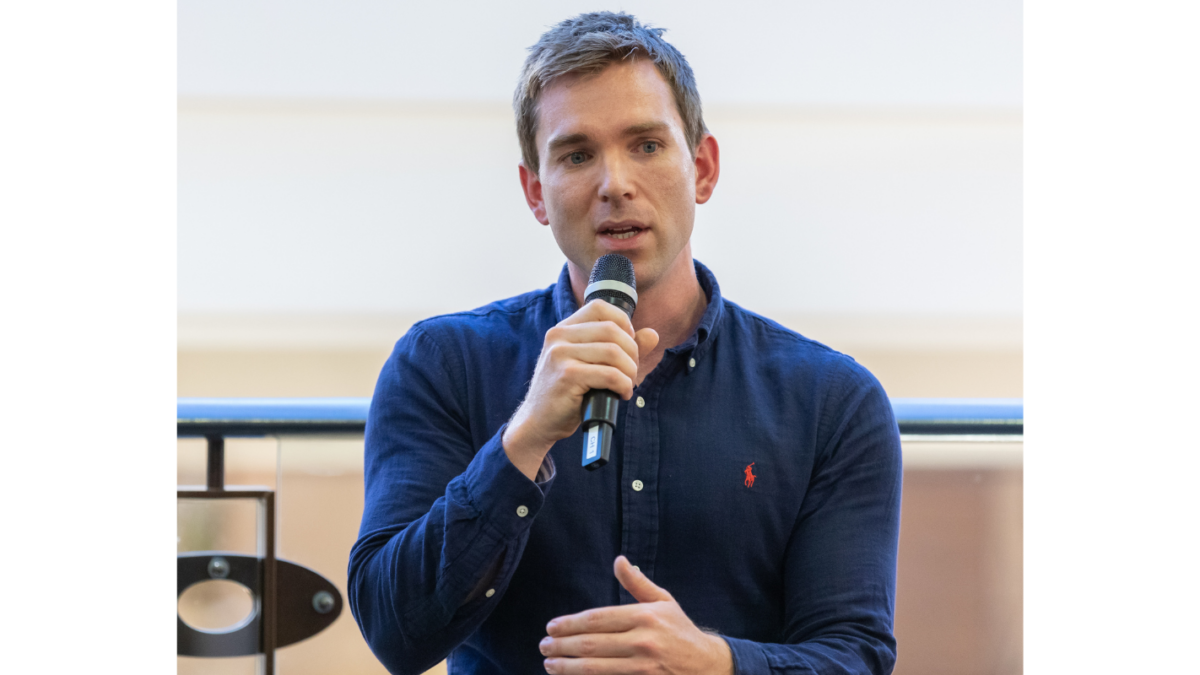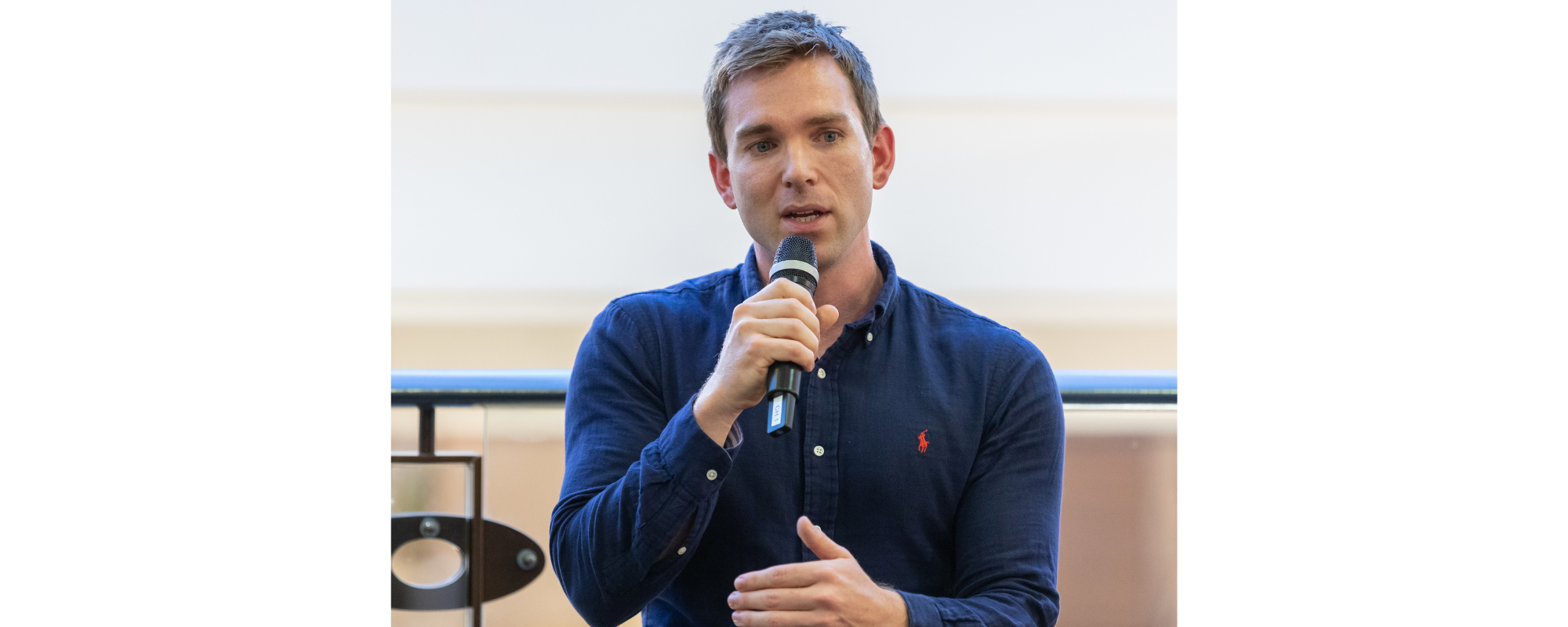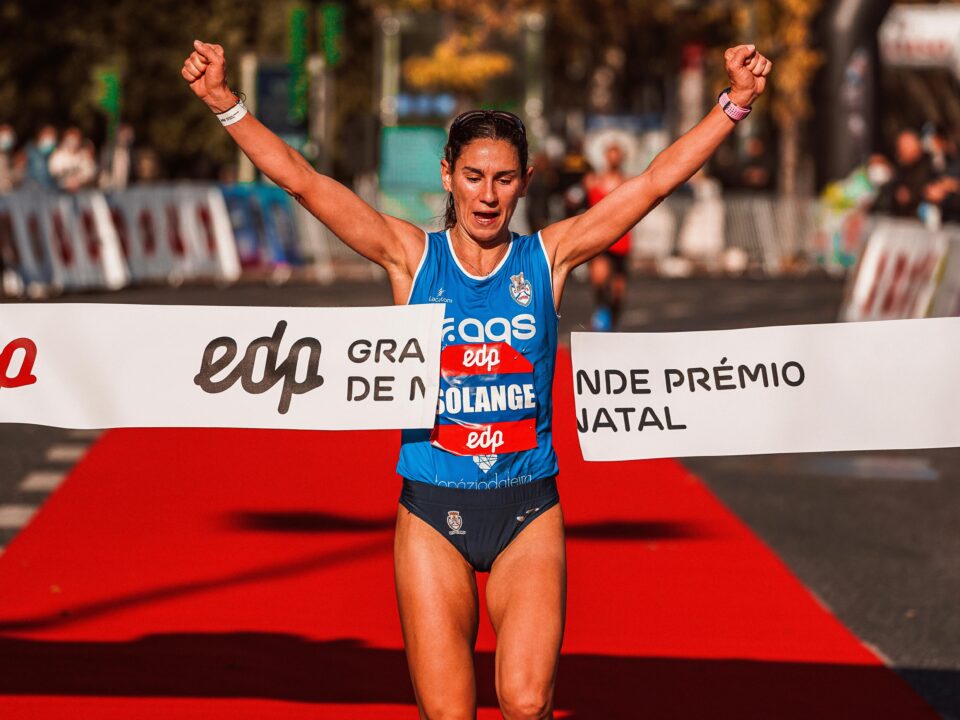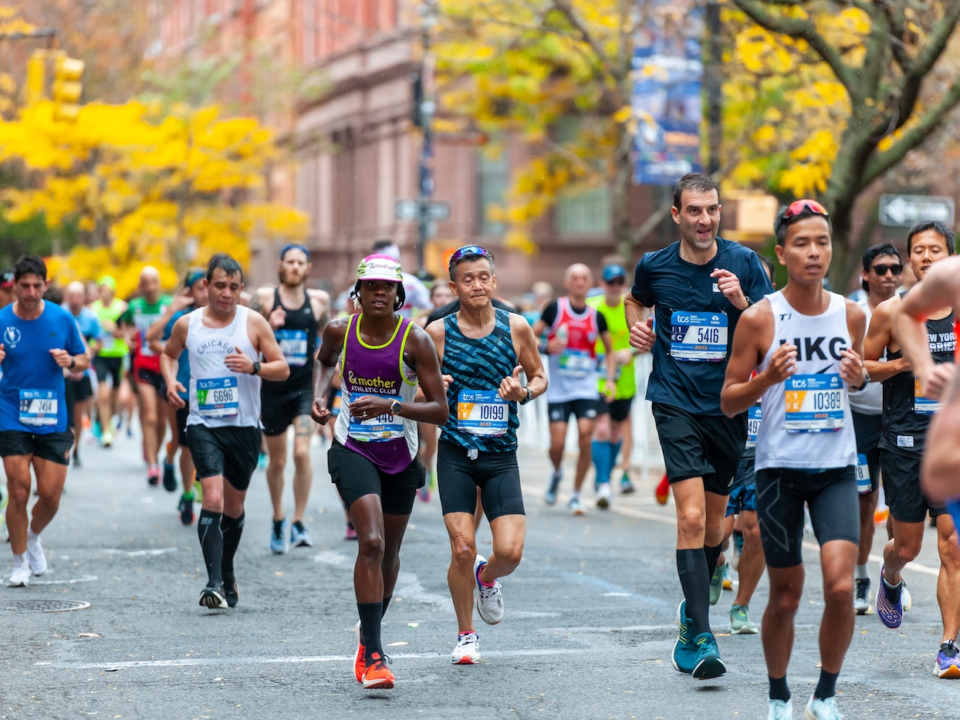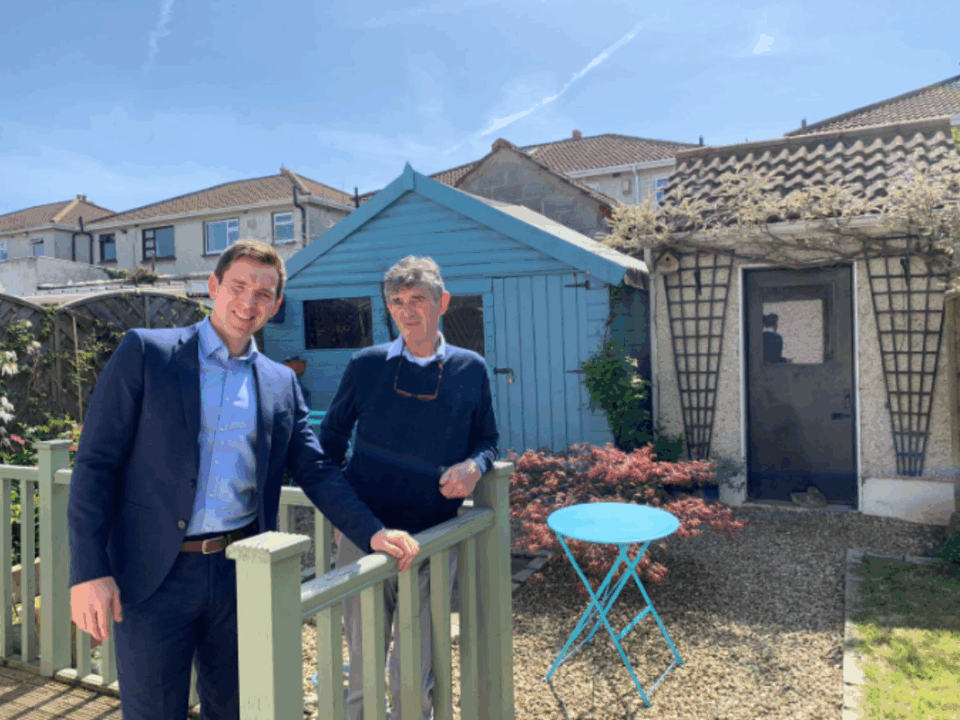
“I’ve Never Thought About It Like That” — Why Identity Shapes Your Performance
April 17, 2025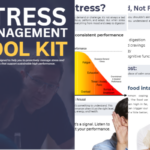
30 Days, 30 Opportunities
June 18, 2025
“I’ve Never Thought About It Like That” — Why Identity Shapes Your Performance
April 17, 2025
30 Days, 30 Opportunities
June 18, 2025When I set out to work as a performance nutritionist in college nearly 20 years ago, I dreamed of the day I would work in elite sport and experience what that felt like. Through a combination of hard work, building experience, timing and key people supporting me, I realised that dream and spent ten of the most formative years of my career in sport to date working with Dublin football and Leinster Rugby.
It’s now almost three years since I stepped away from that environment, and a lot has changed. I’ve changed personally, and so too has my outlook on the role of a performance nutritionist.
This might surprise some people, but there are aspects of what I did back then that I simply couldn’t do now. Not because they are not important, but because of how much I now value athletes taking ownership of their preparation. I recently saw images of performance nutritionists in professional teams preparing smoothies and hydration drinks with extreme personalisation. It reminded me how easily athletes can become dependent on these services and how the role can drift into performance management rather than performance support.
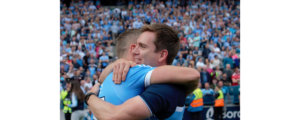
There is a time and place for doing everything you can to reduce pressure on the athlete and help them meet their goals. In elite environments, the margins matter and attention to detail is essential. But if athletes never take responsibility for their recovery routines, their nutrition, or their day-to-day planning, then we are failing to prepare them for what happens when the support is no longer there. True high performance requires independence, adaptability and ownership. That is where real growth happens.
The best athletes I have worked with knew this. They were deeply invested in every part of their preparation. They asked questions, reflected on their habits, and took charge of the process. Of course, there are moments where creating highly individualised plans, meals, and strategies is necessary. I remember labelling each bottle for Dublin players and measuring fluid intake to track hydration goals. That level of detail can play an important role, but only if it is matched with education and a long-term mindset.
I recently watched a video of Clare Farrell, the performance nutritionist for Liverpool Football Club, delivering a session while the players were on bikes doing active recovery. You could see they were relaxed but fully engaged. That is not easy to do, and it shows how you can bring knowledge into the performance space in a way that’s memorable and useful. It’s a great example of how to keep nutrition visible without overstepping into doing everything for athletes. There is a balance between evolving your service and spoon-feeding.

Where does it end, and how do we avoid letting innovation become a distraction?
I remember working with an elite athlete who was constantly chasing marginal gains. I ended up sourcing a specialist cream for his legs that might have improved on-field performance. I had my doubts, but I thought giving him something he believed in could boost confidence. In the short term it helped, but longer term it became something he relied on. He started to associate performance with the presence of that product. That is the risk. When we offer short-term fixes, even with good intentions, we can unintentionally create long-term problems.
This is one of the reasons why transitioning into one-to-one work with athletes and individuals has been both challenging and rewarding. There is less control, but more opportunity for deep impact. The outcomes take longer and are harder to measure, but they reflect the real work, building consistency, resilience, and understanding.
That is what I love about this phase of my work. Because when someone says, this is so much more than nutrition, they are right. That is exactly the point. If you don’t invest across all your performance pillars in a structured and intentional way, achieving your health or performance goals becomes extremely difficult.
Would I go back into an elite sports environment? In a heartbeat. But I would do so with a broader perspective. I would focus less on what happens on the field and more on the decisions athletes make away from it, their environment, their systems, their habits. I would spend time in their homes helping them create a kitchen strategy, routines around food prep, and a culture of recovery. The home should be a sanctuary for performance, physically, mentally and emotionally.
If you are reading this, think about what that means for your own performance blueprint. How are you managing the time around your sessions? What are the simple systems you have in place to support energy, recovery, and decision-making?
An elite athlete might only spend five percent of their time actively training. The other ninety-five percent is spent preparing for the next session or recovering from the last. That is where performance lives or dies in the invisible hours.
Here are some questions to help you reflect on your own process:
- Have you built a home environment that supports recovery, focus and wellbeing?
- What are the most critical time points in your day? When do you need to be at your best?
- Are your meals and fuelling strategies consistently aligned with those moments?
- Where is your personal time built in?
- Do you see nutrition as a critical investment in your goals, or a chore left to someone else?
- How many of your meals are prepared by you, with intention, versus passively outsourced?
The answers to these questions will tell you a lot about the direction you’re heading. Build a process that reflects the standards you want to live by. Because long-term performance is not built on what you do once in a while. It is built on what you consistently take responsibility for.
Want more on this?
This is exactly the kind of thinking and guidance we explore every day inside the Inner Circle—our private platform for athletes, coaches, and individuals who want to master their performance blueprint. From education and strategy to support and community, the Inner Circle helps you bridge the gap between knowing and doing. If this article resonated with you, join us inside and let’s build that process together.
When I set out to work as a performance nutritionist in college nearly 20 years ago, I dreamed of the day I would work in elite sport and experience what that felt like. Through a combination of hard work, building experience, timing and key people supporting me, I realised that dream and spent ten of the most formative years of my career in sport to date working with Dublin football and Leinster Rugby.
It’s now almost three years since I stepped away from that environment, and a lot has changed. I’ve changed personally, and so too has my outlook on the role of a performance nutritionist.
This might surprise some people, but there are aspects of what I did back then that I simply couldn’t do now. Not because they are not important, but because of how much I now value athletes taking ownership of their preparation. I recently saw images of performance nutritionists in professional teams preparing smoothies and hydration drinks with extreme personalisation. It reminded me how easily athletes can become dependent on these services and how the role can drift into performance management rather than performance support.

There is a time and place for doing everything you can to reduce pressure on the athlete and help them meet their goals. In elite environments, the margins matter and attention to detail is essential. But if athletes never take responsibility for their recovery routines, their nutrition, or their day-to-day planning, then we are failing to prepare them for what happens when the support is no longer there. True high performance requires independence, adaptability and ownership. That is where real growth happens.
The best athletes I have worked with knew this. They were deeply invested in every part of their preparation. They asked questions, reflected on their habits, and took charge of the process. Of course, there are moments where creating highly individualised plans, meals, and strategies is necessary. I remember labelling each bottle for Dublin players and measuring fluid intake to track hydration goals. That level of detail can play an important role, but only if it is matched with education and a long-term mindset.
I recently watched a video of Clare Farrell, the performance nutritionist for Liverpool Football Club, delivering a session while the players were on bikes doing active recovery. You could see they were relaxed but fully engaged. That is not easy to do, and it shows how you can bring knowledge into the performance space in a way that’s memorable and useful. It’s a great example of how to keep nutrition visible without overstepping into doing everything for athletes. There is a balance between evolving your service and spoon-feeding.

Where does it end, and how do we avoid letting innovation become a distraction?
I remember working with an elite athlete who was constantly chasing marginal gains. I ended up sourcing a specialist cream for his legs that might have improved on-field performance. I had my doubts, but I thought giving him something he believed in could boost confidence. In the short term it helped, but longer term it became something he relied on. He started to associate performance with the presence of that product. That is the risk. When we offer short-term fixes, even with good intentions, we can unintentionally create long-term problems.
This is one of the reasons why transitioning into one-to-one work with athletes and individuals has been both challenging and rewarding. There is less control, but more opportunity for deep impact. The outcomes take longer and are harder to measure, but they reflect the real work, building consistency, resilience, and understanding.
That is what I love about this phase of my work. Because when someone says, this is so much more than nutrition, they are right. That is exactly the point. If you don’t invest across all your performance pillars in a structured and intentional way, achieving your health or performance goals becomes extremely difficult.
Would I go back into an elite sports environment? In a heartbeat. But I would do so with a broader perspective. I would focus less on what happens on the field and more on the decisions athletes make away from it, their environment, their systems, their habits. I would spend time in their homes helping them create a kitchen strategy, routines around food prep, and a culture of recovery. The home should be a sanctuary for performance, physically, mentally and emotionally.
If you are reading this, think about what that means for your own performance blueprint. How are you managing the time around your sessions? What are the simple systems you have in place to support energy, recovery, and decision-making?
An elite athlete might only spend five percent of their time actively training. The other ninety-five percent is spent preparing for the next session or recovering from the last. That is where performance lives or dies in the invisible hours.
Here are some questions to help you reflect on your own process:
- Have you built a home environment that supports recovery, focus and wellbeing?
- What are the most critical time points in your day? When do you need to be at your best?
- Are your meals and fuelling strategies consistently aligned with those moments?
- Where is your personal time built in?
- Do you see nutrition as a critical investment in your goals, or a chore left to someone else?
- How many of your meals are prepared by you, with intention, versus passively outsourced?
The answers to these questions will tell you a lot about the direction you’re heading. Build a process that reflects the standards you want to live by. Because long-term performance is not built on what you do once in a while. It is built on what you consistently take responsibility for.
Want more on this?
This is exactly the kind of thinking and guidance we explore every day inside the Inner Circle—our private platform for athletes, coaches, and individuals who want to master their performance blueprint. From education and strategy to support and community, the Inner Circle helps you bridge the gap between knowing and doing. If this article resonated with you, join us inside and let’s build that process together.
Upgrade NOW
Upgrade NOW



